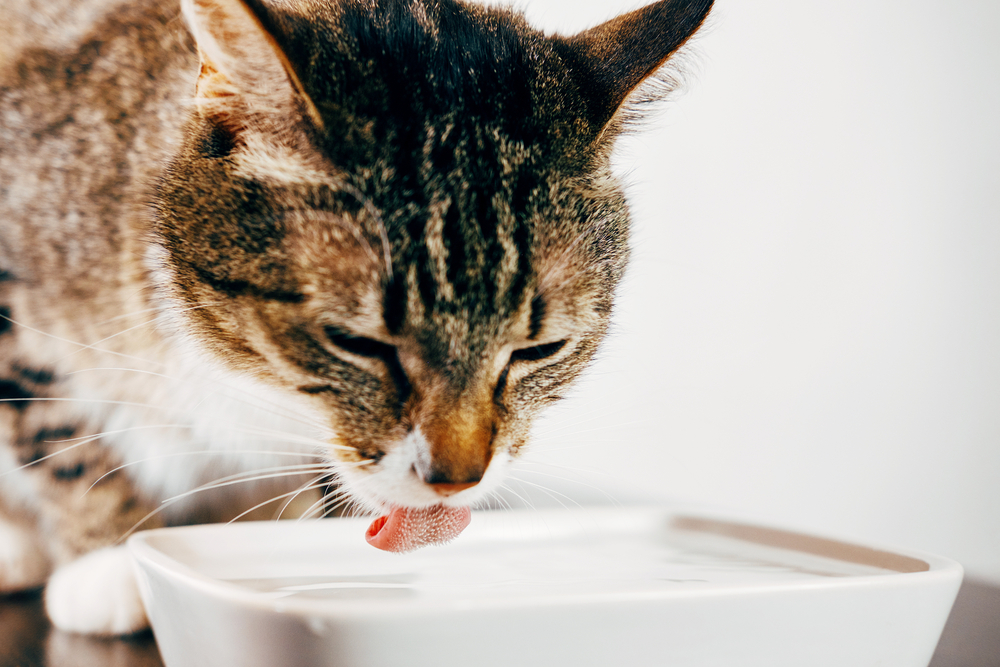Chronic kidney disease (CKD) is prevalent in pets, especially senior cats and dogs, and many pets don’t exhibit signs until they are in the advanced stages. Our Heritage Veterinary Clinic team is concerned about your pet’s kidney health, and we explain why early detection of CKD is so important and what screening tests are available.
Chronic kidney disease basics in pets
CKD, also referred to as chronic renal insufficiency, is a progressive condition that inhibits the kidneys’ ability to function properly. The kidneys play several important roles in maintaining vital bodily functions, and when these organs are compromised, the consequences can be life-threatening. CKD interrupts normal kidney duties, including:
- Maintaining hydration — Kidneys normally help the body conserve water when a pet doesn’t drink enough by concentrating the urine, and the organs get rid of excess water when a pet drinks too much by increasing urine output. When the kidneys don’t function normally, they can’t effectively concentrate urine.
- Removing toxins — Small filters in kidneys, called nephrons, are responsible for removing waste materials from the body. Pets affected by CKD have toxins accumulate in their bloodstream—a condition called uremia.
- Balancing minerals and electrolytes — The kidneys play an important role in balancing minerals, such as calcium and phosphorus, and electrolytes, such as sodium and potassium.
- Regulating blood pressure — Kidneys have sensors that help regulate blood pressure. During CKD, hypertension often occurs, exacerbating damage to the kidney tissue.
- Conserving protein — The kidney filtration system keeps vital proteins in the body while removing harmful wastes, but when the system is damaged, protein is lost in the urine.
- Producing red blood cells (RBCs) — The kidneys produce a hormone called erythropoietin that signals the bone marrow to produce more RBCs. CKD can inhibit erythropoietin production, leading to anemia.
- Balancing pH — CKD affects the kidneys’ ability to balance the body’s pH, leading to metabolic disturbances.
Chronic kidney disease signs in pets
Pets don’t want to exhibit vulnerabilities and they instinctively hide illness, but as CKD progresses, signs typically include:
- Lethargy
- Increased thirst and urination
- Vomiting
- Decreased appetite
- Foul breath
- Weight loss

Chronic kidney disease diagnosis in pets
The best way to detect CKD in the early stages is to schedule regular wellness examinations for your pet. Adult pets should be evaluated at least once a year, and senior pets should be assessed every six months. Important CKD screening tests include:
- Creatinine — Creatinine is a waste product created by the muscles that typically is filtered by the kidneys. Elevated levels can indicate CKD. Approximately 75% of kidney function is lost before creatinine levels increase in pets affected by CKD.
- Blood urea nitrogen (BUN) — BUN is a waste product created by the liver that typically is filtered by the kidneys, and elevated levels can indicate CKD. A large amount of kidney function must be lost before BUN levels increase in pets affected by CKD.
- Symmetric dimethylarginine (SDMA) — SDMA is an amino acid produced when protein is broken down. Levels increase when 25% to 40% of kidney function is compromised, making this test a more sensitive indicator of CKD and one that should be used in conjunction with BUN and creatinine when screening for CKD.
- Urine specific gravity — Since pets affected by CKD can’t concentrate their urine, their urine specific gravity is abnormally low.
- Red blood cells (RBCs) — If CKD causes decreased erythropoietin production, a pet’s RBCs are low.
- Phosphorus — Elevated phosphorus levels typically indicate kidney damage.
If these diagnostics indicate your pet has CKD, other potential tests that may be recommended include:
- Urine culture — Pets affected by CKD are at higher risk for urinary tract infections, and a urine culture can help identify the pathogen.
- Urine protein to creatinine (UPC) ratio — A UPC ratio helps determine how much protein is being lost in the urine.
- Blood pressure — Since CKD often causes elevated blood pressure, a pet’s blood pressure will be measured.
- Imaging — We may use X-rays or ultrasound to look at a pet’s kidneys and assess the damage.
Chronic kidney disease stages in pets
Once CKD is diagnosed, an affected pet’s condition is staged to determine the appropriate treatment approach. Stages are based on clinical signs and laboratory values and include:
- Stage 1 — In stage one, clinical signs are typically not present, and abnormalities in laboratory values are minimal.
- Stage 2 — In stage two, clinical signs are absent or mild, and abnormalities in laboratory values are mild.
- Stage 3 — In stage three, clinical signs are mild to moderate, and abnormalities in laboratory values are moderate.
- Stage 4 — In stage four, affected pets often present as a crisis, and abnormalities in laboratory values are significant.
Chronic kidney disease treatment in pets
The treatment strategy depends on the CKD stage, but potential treatment strategies include:
- Hydration — CKD pets must be kept hydrated, and if a pet isn’t drinking enough, they must receive intravenous or subcutaneous fluids to prevent dehydration.
- Nutrition — Appropriate nutrition is an important aspect in treating CKD. Prescription renal diets are available to provide adequate nutrition with low levels of protein and phosphorus.
- Anti-vomiting medications — We may prescribe medications to manage a pet’s nausea and vomiting.
- Other medications — Other medications, such as phosphate binders, blood pressure medications, drugs to regulate calcium levels, and medications to stimulate RBC production, also may be necessary.
Early detection of CKD is important to help prolong your pet’s life and improve their quality of life. Contact our Heritage Veterinary Center team today to schedule a wellness exam for your pet so we can evaluate their kidney health.







Leave A Comment